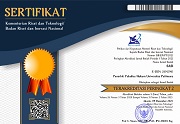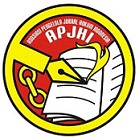Standardization and Standard Essential Patents for Public Good: Application in Automotive Industry
Indian Institute of Technology Kharagpur,
Kharagpur
,
India
Indian Institute of Technology Kharagpur,
Kharagpur
,
India
Abstract
The majority of patents related to automotive safety systems are owned by a limited number of companies. Absorption and implementation of such innovations in large markets require solutions that would go beyond what is protected through exclusive means viz. patents. Taking learnings from the field of communication, wherein by implementing what is known as standard-essential patents, a horizontal deployment of a similar concept is required in other areas, most notably, automotive safety systems is necessitated. This study aims to explore the need for a practical approach to a broader technological, commercial, and social cause.
Copyright © 2021. Soumya Prakash Patra, K. D. Raju
This article is distributed under the terms of the Creative Commons Attribution Attribution-NonCommercial 4.0 International License, which permits unrestricted use and redistribution provided that the original author and source are credited.
A. INTRODUCTION
Vehicular safety tools for riders such as Anti-lock Brake Systems (ABS), passing the mandatory crash tests and vehicular emission norms are becoming increasingly compulsory (CMVR, 2015) for developing countries like India. European Union (EU) has already made safety systems such as ABS and Combined Brake Systems (CBS) mandatory since 2012.
Council of the European Union, (2012), Motorcycles: New Safety and Enviromental Requirements
Similarly, controlling the emissions with new emission norms impacts direct interference in the working of engines and efficiency. Understanding and implementing solutions to such dynamic and complex inter-relationship in innovations requires high expertise. The adoption of such safety and emission reduction systems is quite simpler in developed markets such as the EU owing to customers willing to paying more for these systems. Further, in the former markets, two-wheelers are used more as a leisure vehicle than a daily commuter vehicle as in India.
Ganguli, (2017) Inspection & Maintenance for In-Use Vehicles in India.
However, absorption and implementation of such innovations in large markets
KPMG, (2017) ‘The Indian Automotive Industry: Evolving Dynamics’.
The Office Of The Controller General and others, (2019), Annual Report 2017-2018.
European Commission, (2017), Standard Essential Patents.
Therefore, broader applicability of solutions to factors such as safety norms requires two essential components, viz. establishment of standardization organizations, which could be part of existing government policy-making and determining the essential patents. This study aims to explore the options for a practical approach to a broader technological, commercial, and social cause.
B. LITERATURE REVIEW
1. Importance of Standards
Technical specifications have existed since time immemorial. For example, A4 papers, switches, plugs, etc. are all made to particular standards. Standards may be classified into three broad functional categories
Lemley, Mark A., Shapiro, Carl. (2007). Patent Holdup and Royalty Stacking, Texas Law Review, 85, https://escholarship.org/uc/item/8638s257.
Piesiewicz, Grazyna., Schellingerhout, Ruben. (2007). Intellectual Property Rights in Standard Setting from a Competition Law Perspective, Competition Policy Newsletter, 3, 36–38.
2. Importance of Standard Essential Patents
A direct consequence of setting standards is to achieve a common ground on the specification of technology for ensuring interoperability and ease of innovation on sophisticated technologies.
Pohlmann, Tim Christoph., Neuhäusler, Peter., Blind, Knut. (2016). Standard Essential Patents to Boost Financial Returns. R&D Management, 46 (S2), 612-630. http://dx.doi.org/10.1111/radm.12137.
Microsoft Corp. v. Motorola Inc, 963 F.Supp.2d 1176, 2013, F.Supp.2d1, 1176.
3. Standard Setting Organizations and Standard Essential Patents
For establishing standards, there exist three criteria
Geradin, Damien. (2013). The European Commission Policy Towards the Licensing of Standard-Essential Patents: Where Do We Stand?, Journal of Competition Law and Economics, 9 (4), 1125–45. https://doi.org/10.1093/joclec/nht036.
Carrier, Michael a. (2012). A Roadmap to the Smartphone Patent Wars and FRAND Licensing Licensing, CPI Antitrust Chronicle, 2 (April), 1-7. https://ssrn.com/abstract=2050743.
Bharadwaj, Ravikant. (2013). Standard Setting in India: Competition Law and IP Issues, IMJ, 5 (1), 2
SSOs are the group that sets common standards in various technical areas responding to the need for broader adoption of technology and interoperability between components
Bosworth, D. Scott Russell., Mangum, W., Matolo, Eric C. (2018). FRAND Commitments and Royalties for Standard Essential Patents’, in Complications and Quandaries in the ICT Sector: Standard Essential Patents and Competition Issues, https://doi.org/10.1007/978-981-10-6011-3_2.
Lorenzo, Relatore. (2014). Stanghellini Candidato, and Niccolò Galli, ‘Standard Essential Patents Litigation and Abuse of a Dominant Position: The " FRAND " Defense in the EU Competition Law Context, Universita Degli Studi Firezi, https://www.studiotorta.com/wp-content/uploads/2016/02/2016-niccolo-galli-the-frand-defense-in-the-eu.pdf.
4. Importance of Two-Wheelers in India
There were 20.1 million two-wheelers sold in India in 2018-2019
SIAM, (2019). Technical Regulation. https://www.siam.in/technical-regulation.aspx?mpgid=31&pgidtrail=34.
Bhattacharya, Mousumi., Bhattacharya, Sharad Nath. (2008). Investigating Stationarity of the Indian GDP Using Unit Root Test’, The Journal Of Army Institute Of Management Kolkata (Formerly National Institute Of Management Calcutta), VIII (2), 35-48.
As a result, two-wheelers play an essential role in the demography of the country. Therefore, a study on safety systems, primarily focused on two-wheelers, is mandated owing to their extensive use in the daily life of Indians.
5. Existing Legal and Institutional Set Up On Road Safety and Standards in India
Road safety is an issue dealt by both Central and State Governments of India. Ministry of Road Transportation and Highways (MoRTH) is the central nodal agency is responsible for road safety efforts in India. The principal legislation related to safety and standards related to road safety is the Motor Vehicles Act, 1988.
[Figure ID: fig1]
Figure 1.
illustrates the standards and stakeholders for automotive safety.
*Source: Author's compilationFigure 1 illustrates all the stakeholders for various facets of automotive safety standards. The main agencies involved are AISC, CMVR-TSC, and BIS for the formation of standards in fields such as safety, emissions, noise, fuels, energy consumption, and alternative fuels vehicles. Based on the endorsements on the stakeholders involved, the MoRT&H makes notifications for needed amendments in the CMVR Rules. Additionally, Ministry Of Environment And Forest, Ministry Of Petroleum And Natural Gas, and Ministry Of Non-Conventional Energy Resources are the required agencies for making regulations related to standards on emissions, noise, fuels, and alternative fuel vehicles, respectively
SIAM, ‘Technical Regulation’.
The relevant Indian Standard that was developed after the deliberations on harmonization of the above said GTR and deliberations with AISC is IS 14664 (2010). The above mentioned IS standard relates to requirements on ABS and CBS for two-wheelers and three-wheelers. The IS 14664 (2010) is aligned to the Directive 2002/24/EC of the European Parliament and of the Council that relates to the type approval for two and three-wheel motor vehicle. The GTR3 was subsequently aligned with the same directive.
Pavlovic, Ana., Fragassa, Cristiano. (2015). General Considerations on Regulations and Safety Requirements for Quadricycles, International Journal for Quality Research, 9 (4), 657–674. http://www.ijqr.net/paper.php?id=373
6. The Legal Structure in India On Vehicular Safety Systems and Patents
The primary vehicular rules and regulations in India are governed by the Ministry of Road Transport, Highways and Shipping. It acts as the nodal agency and is governed by the Motor Vehicles Act (MVA), 1988, and the Central Motor Vehicles Rules (CMVR), 1989. For issues related to safety and emission regulations, there are three committees, namely the CMVR Technical Standing Committee, Automotive Industry Standards Committee, and the Standing Committee on Implementation of Emission Legislation. These committees provide all the technical clarification and interpretation of the various rules, regulations, and recommendations of the MVA and CMVR primarily. Based on the recommendations from the committees, multiple modifications to the CMVR are presented. Further, other ministries such as the Ministry of Environment and Forests and the Ministry of Non-Conventional Energy Sources (now, the Ministry of New and Renewable Energy) also influence on regulations such as emissions, fuels, etc.
SIAM, (2017), Regulatory Framework.
The CMVR notification
CMVR, (2015), Central Motor Vehicles (Fourteenth Amendment) Rules 1989, Rule 4A (Draft).
Bureau of Indian Standards, (2010). IS 14664:2010 Automotive Vehicles -Performance Requirements and Testing Procedure for Braking System of Two and Three Wheeled Motor Vehicles.
Global Technical Regulation, (2006). Motorcycle Brake Systems.
The Patents Act, 1970, governs the patents related to any new technical area. The Patents Act prescribes compulsory licensing on conditions that either the reasonable requirements of the public concerning the patent invention have not been satisfied, or the patented invention is not available to the public at a reasonable price, or the patented invention is not worked in the territory of India. However, SSOs take their relevance concerning the compulsory licensing provision in terms of royalty negotiation. In the case of compulsory licenses, the rates of royalty are determined by the Government by negotiating with the patent owner
I Decker, S., & King, (2015). Wi-Fi Inventors’ Cut of IPhone 6 Sales to Shrink in Vote.
C. DISCUSSION AND ANALYSIS
With increasing trade and interdependencies of the Indian economy with the global economy, standards are increasingly being recognized as increasingly important for expanding conventional markets and socio-economic development of the society. This can be observed from the increasing focus of the policymakers on the front of standardization and regulation in almost all the related areas, as illustrated above. One of the most important reasons for increased focus on standardization is its ability to allow interoperability and compatibility between different markets and technologies. Another reason for the increased focus of India in the standardizing various areas of technology, including automotive safety, is providing a common area of operation for innovators to innovate in a particular direction without thinking much about essential areas of compatibility and functionality. This observation is more supported by the number of patent filings in the various areas of automotive technologies. It could be seen that there is an increasing trend of patent filings in all the new areas for technologies such as Artificial intelligence, battery technologies, electric vehicles, safety systems, etc. Further, like other progressive nations such as the US and EU, India also has provided definitive bureaucratic and organizational support on the development of standards related to automotive safety, which could be observed from the regulatory functionality of AISC, CMVR-TSC, and BIS.
All the above holds good when the various branches of the Government work in tandem to give out meaningful solutions to existing problems faced by the industry in particular and the society in nature. For instance, the transport sector is mainly managed by the MoRTH, in which the field of patents and associated intellectual property regulations are governed by the Ministry of Commerce and Industry (MCI). There is no charter between the two agencies, i.e., the Indian Patent Office (IPO), which is governed under the Indian Patent Act 1970 and the AISC under Motor Vehicles Act 1988 and CMVR 1989. While the AISC works out the technical standards which are formalized as Indian Standards by the BIS, there is no such collaboration between either the AISC or BIS with the Indian Patent establishment that includes the Indian Patent Office for development of automotive safety standards. The reasons for the same could be reasoned as: Both the verticals, i.e., IPO and AISC, work under different ministries of the Government of India.
The motives and goals of both organizations are different in terms of their objective and working nature. For instance, IPO works on the promotion of innovation culture and the consequent protection of intellectual property in the country. The IPO acts as the nodal agency for patent-related laws and regulations, while the AISC assists CMVR-TSC for framing of automotive standards.
There is no-correlation on the framing of standards by taking into consideration the associated IPR assets of participating organizations and their dominant positions in terms of patent holdings by various automotive companies. For example, on one side, automotive safety standards on ABS and CBS, such as IS 14664 (2010), are done in consultation with various two-wheeler manufacturers; the technical parameters and capability of the organizations are seldom studied to avert any misuse of any dominant position by such organizations.
Therefore, a lack of coherent system wherein both the domains of IP as well as automotive safety system as in brakes is detrimental in providing a cost-effective solution to existing safety issues. This needs of imminent addresses of overhauling the regulatory framework of establishing standards in India that would have a cross-functional action to fulfill today's demands of going in tandem with cross-functional inventions and consequent regulatory changes.
D. CONCLUSION
As India moves ahead in adopting better technologies and systems with the implementation of safety norms on braking systems such as ABS and CBS, new emission norms and new fuel norms, it is imperative that the technologies associated with such solutions/proposals need to be available in a more comprehensive, more accessible, and cost-effective manner. Further, it is also essential to maintain a balance and motivation in terms of commercial profit for innovators to provide such solutions. However, no organization deals with such areas, unlike the presence of various organizations, which deal with such scenarios in the communication field.
Hence, there is an urgent need for formulating a legal framework in India, which would further engage technology providers, suppliers, and end-users to effectively utilize each other leading to adaptation of such norms in ABS and CBS in a more comprehensive and much cost-effective manner. Therefore, there arises a need for a framework for creating a balance between broader technology assimilation along with its availability of affordable components and commercial benefits owing to exclusive patent rights by various players. Therefore, more general applicability of solutions to factors such as safety norms requires two essential components, viz. establishment of standardization organizations, which could be part of existing government policy-making and determining the essential patents.
conf1The author declare that no competing interests exist.
Copyright (c) 2021 Soumya Prakash Patra, K. D. Raju

This work is licensed under a Creative Commons Attribution-NonCommercial 4.0 International License.

















